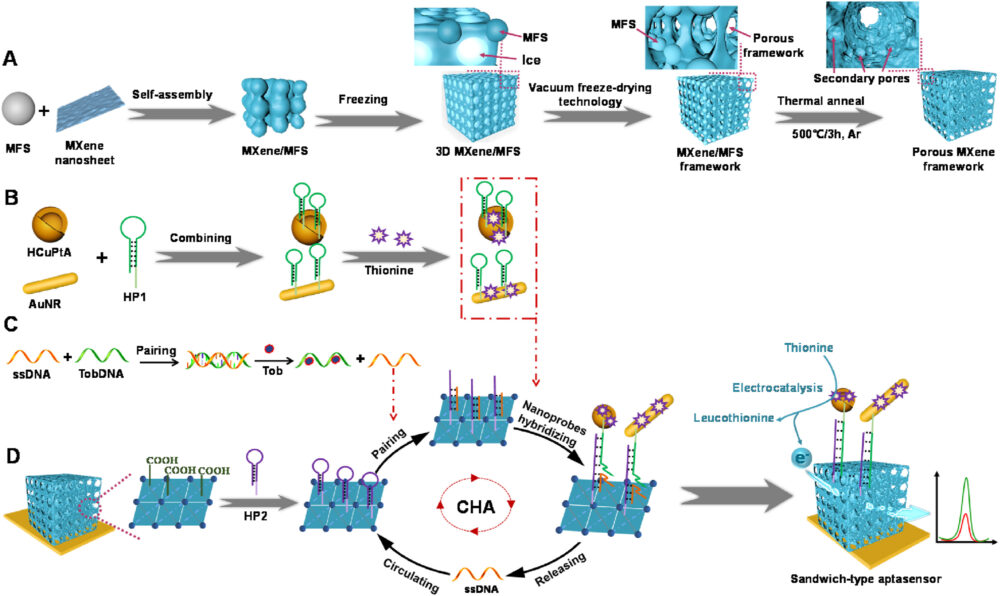
A team led by Professor Wu Zhengyan from the Hefei Institute of Physical Science of the Chinese Academy of Sciences has developed a high-sensitivity electrochemical aptasensor to aid the detection of thrombin in serum.
Thrombin is a proteolytic enzyme that catalyzes the conversion of fibrinogen to fibrin and promotes blood clotting. When found in blood, it can, amongst other diseases, be indicative of leukaemia, thrombotic diseases, vascular wall inflammation and Alzheimer’s . Thrombin is not normally present in the blood of humans or animals and is converted from prothrombin during coagulation. Therefore, accurate detection of low concentration thrombin is of great significance to the diagnosis, treatment and evaluation of drug efficacy in related diseases.
The team developed the aptasensor using synchronous coordination of triple signal amplification strategies. During the design process, a Ti3C2Tx (titanium carbide) MXene multilevel porous structure was chosen as the sensing material and a metallic nanoprobe as the signal amplifier. The porous structure has more electronic transport channels and the nanoprobe has higher electrocatalytic effect, which is helpful to promote the response signal of the sensor.
When the researchers applied the sensor to detect a low concentration of thrombin in blood, they found that not only could it detect thrombin at picomolar concentration, but it also showed excellent anti-interference and stability against various physiological substances.
“The sensing platform established in this study can be customized to analyze other biological or environmental substances,” said Yang Pengqi, a PhD student who helped to conducted the research, “what is required is to rationally design the DNA sequences of the target-binding aptamer.”
This research was supported by the University Synergy Innovation Program of Anhui Province, the Special Project of Central Government for Local Science and Technology Development of Shandong Province, and the Open Research Fund of Key Laboratory of Environmental Toxicology and Pollution Control Technology of Anhui Province.
This research was supported by the University Synergy Innovation Program of Anhui Province, the Special Project of Central Government for Local Science and Technology Development of Shandong Province, and the Open Research Fund of Key Laboratory of Environmental Toxicology and Pollution Control Technology of Anhui Province.






